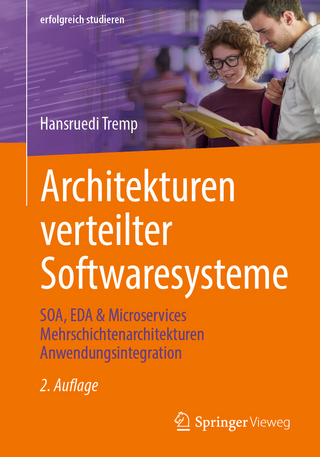
OLED Displays and Lighting
Wiley-IEEE Press (Verlag)
978-1-119-04045-3 (ISBN)
- Titel z.Zt. nicht lieferbar
- Versandkostenfrei innerhalb Deutschlands
- Auch auf Rechnung
- Verfügbarkeit in der Filiale vor Ort prüfen
- Artikel merken
Explains the fundamentals and practical applications of flat and flexible OLEDs for displays and lighting
Organic light-emitting diodes (OLEDs) have emerged as the leading technology for the new display and lighting market. OLEDs are solid-state devices composed of thin films of organic molecules that create light with the application of electricity. OLEDs can provide brighter, crisper displays on electronic devices and use less power than conventional light-emitting diodes (LEDs) or liquid crystal displays (LCDs) used today. This book covers both the fundamentals and practical applications of flat and flexible OLEDs.
Key features:
Covers all of the aspects necessary to the design and manufacturing of OLED displays and lighting.
Explains the fundamental basic technologies and also related technologies which might contribute to the next innovation in the industry.
Provides several indications for future innovation in the OLED industry.
Includes coverage of OLED vacuum deposition type and solution type materials.
The book is essential reading for early career engineers developing OLED devices and OLED related technologies in industrial companies, such as OLED device fabrication companies.
Dr. Koden is currently a Professor at the Innovation Center for Organic Electronics (INOEL) at Yamagata University, Japan. He is the author/ co-author of more than 70 papers and articles, and is the inventor of more than 150 patents. Prof. Koden has extensive R&D industrial experience from his 30 year career at Sharp Corporation.
Preface ix
1 History of OLEDs 1
References 10
2 Fundamentals of OLEDs 12
2.1 Principle of the OLED 12
2.2 Fundamental Structure of the OLED 14
2.3 Features of the OLED 15
3 Light Emission Mechanism 17
3.1 Fluorescent OLEDs 17
3.2 Phosphorescent OLEDs 19
3.3 Thermally Activated Delayed Fluorescent OLEDs 21
3.4 Energy Diagram 21
3.5 Light Emission Efficiency 23
References 24
4 OLED Materials 25
4.1 Types of OLED Materials 26
4.2 Anode Materials 27
4.3 Evaporated Organic Materials (Small Molecular Materials) 29
4.3.1 Hole Injection Materials 29
4.3.2 Hole Transport Materials 32
4.3.3 Emitting Materials and Host Materials in Fluorescent Emission Layer 33
4.3.4 Emitting Materials and Host Materials in Phosphorescent Emission Layer 34
4.3.5 Emitting Materials and Host Materials in TADF Emission Layers 42
4.3.6 Electron Transport Materials 43
4.3.7 Electron Injection Materials and Cathodes 45
4.3.8 Charge-Carrier and Exciton Blocking Materials 46
4.3.9 N-Dope and P-Dope Materials 49
4.4 Solution Materials 50
4.4.1 Polymer Materials 50
4.4.2 Dendrimers 61
4.4.3 Small Molecules 69
4.5 Molecular Orientation of Organic Materials 70
References 71
5 OLED Devices 75
5.1 Bottom Emission, Top Emission, and Transparent Types 75
5.2 Normal and Inverted Structures 79
5.3 White OLEDs 81
5.4 Full-Color Technology 84
5.4.1 RGB-Side-by-Side 87
5.4.2 White + CF 87
5.4.3 Blue Emission with Color Changing Medium (CCM) 88
5.5 Micro-Cavity Structure 89
5.6 Multi-Photon OLED 91
5.7 Encapsulation 94
5.7.1 Thin Film Encapsulation 99
5.7.2 Desiccant Technologies 100
References 100
6 OLED Fabrication Process 103
6.1 Vacuum Evaporation Process 103
6.1.1 Mask Deposition 104
6.1.2 Three Types of Evaporation Methods 104
6.1.3 Ultra-High Vacuum 105
6.2 Wet Processes 107
6.3 Laser Processes 114
References 115
7 Performance of OLEDs 117
7.1 Characteristics of OLEDs 117
7.2 Lifetime 120
7.2.1 Storage Lifetime 121
7.2.2 Driving Lifetime 121
7.3 Temperature Measurement of OLED Devices 124
References 126
8 OLED Display 127
8.1 Features of OLED Displays 128
8.2 Types of OLED Displays 128
8.3 Passive-Matrix OLED Display 130
8.4 Active-Matrix OLED Display 132
8.4.1 TFT Circuit Technologies 133
8.4.2 TFT Device Technologies 137
8.4.3 Commercialized and Prototype AM-OLED Displays 139
References 144
9 OLED Lighting 147
9.1 Appearance of OLED Lighting 147
9.2 Features of OLED Lighting 148
9.3 Fundamental Technologies of OLED Lighting 152
9.4 Light Extraction Enhancement Technologies 154
9.5 Performance of OLED Lighting 159
9.6 Color Tunable OLED Lighting 159
9.7 Application of OLED Lighting – Products and Prototypes 161
References 164
10 Flexible OLEDs 166
10.1 Early Studies of Flexible OLEDs 166
10.2 Flexible Substrates 167
10.2.1 Ultra-Thin Glass 168
10.2.2 Stainless Steel Foil 171
10.2.3 Plastic Films 172
10.3 Flexible OLED Displays 174
10.3.1 Flexible OLED Displays on Ultra-Thin Glass 176
10.3.2 Flexible OLED Displays on Stainless Steel Foil 176
10.3.3 Flexible OLED Displays on Plastic Film 177
10.4 Flexible OLED Lighting 181
10.4.1 Flexible OLED Lighting on Ultra-Thin Glass 182
10.4.2 Flexible OLED Lighting on Stainless Steel Foil 184
10.4.3 Flexible OLED Lighting on Plastic Films 184
10.5 Toward the Flexible 186
References 186
11 New Technologies 189
11.1 Non-ITO Transparent Electrodes 189
11.1.1 Conducting Polymer 190
11.1.2 Stacked Layer Using Ag 194
11.1.3 Silver Nanowire (AgNW) 195
11.1.4 Carbon Nanotube (CNT) 196
11.2 Organic TFT 197
11.3 Wet-Processed TFT 198
11.4 Novel Wet-Processed or Printed OLED 201
11.5 Roll-to-Roll Equipment Technologies 203
11.6 Quantum Dot 204
References 206
Index 209
| Erscheinungsdatum | 29.12.2016 |
|---|---|
| Reihe/Serie | Wiley - IEEE |
| Sprache | englisch |
| Maße | 173 x 246 mm |
| Gewicht | 499 g |
| Themenwelt | Informatik ► Weitere Themen ► Hardware |
| Technik ► Elektrotechnik / Energietechnik | |
| ISBN-10 | 1-119-04045-0 / 1119040450 |
| ISBN-13 | 978-1-119-04045-3 / 9781119040453 |
| Zustand | Neuware |
| Informationen gemäß Produktsicherheitsverordnung (GPSR) | |
| Haben Sie eine Frage zum Produkt? |
aus dem Bereich


